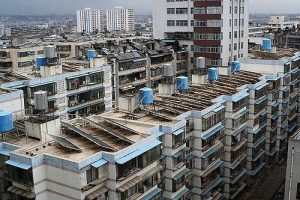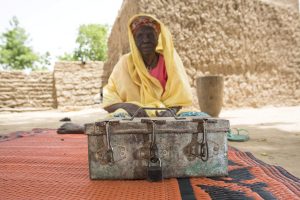Originally published on the CIMMYT website.
 Xuecai Zhang wants to merge traditional maize breeding methods with new software and other tools to help improve farmers’ yields faster than ever. “In the next three decades we need to increase agricultural production by 70 percent to meet projected food demand,” said Zhang, a maize genomic selection breeder at the International Maize and Wheat Improvement Center (CIMMYT). “However, crop yields, while improving, are not increasing quickly enough to meet this challenge. We must explore new methods and technologies that can speed up our crop breeding processes if we hope to feed a world with over 2.3 billion more people by 2050.”
Xuecai Zhang wants to merge traditional maize breeding methods with new software and other tools to help improve farmers’ yields faster than ever. “In the next three decades we need to increase agricultural production by 70 percent to meet projected food demand,” said Zhang, a maize genomic selection breeder at the International Maize and Wheat Improvement Center (CIMMYT). “However, crop yields, while improving, are not increasing quickly enough to meet this challenge. We must explore new methods and technologies that can speed up our crop breeding processes if we hope to feed a world with over 2.3 billion more people by 2050.”
Zhang first arrived at CIMMYT in 2009 while completing a doctorate in applied quantitative genetics. He subsequently returned as a postdoctoral fellow in 2011 to undertake molecular breeding and coordinate CIMMYT’s maize genomic selection program. Since his return, he has focused mainly on helping breeders and statisticians work together to create new tools that can help accelerate the breeding process through genomic selection.


 China recently released its
China recently released its  For 25 years, CARE Village Savings and Loan Associations have powered change through innovative economics. It all started with a few women and a lockbox in remote Niger. Zeinabou remembers 25 years ago when a Norwegian woman named Moira Eknes came to her village in eastern Niger carrying a gray metal box. Zeinabou couldn’t have known then how she and other women in the village of Kagadama would use it to change their lives and their community — or how an effort that started with her would swell to millions of people around the world.
For 25 years, CARE Village Savings and Loan Associations have powered change through innovative economics. It all started with a few women and a lockbox in remote Niger. Zeinabou remembers 25 years ago when a Norwegian woman named Moira Eknes came to her village in eastern Niger carrying a gray metal box. Zeinabou couldn’t have known then how she and other women in the village of Kagadama would use it to change their lives and their community — or how an effort that started with her would swell to millions of people around the world. Women in eastern Niger turn economic opportunity into personal and community transformation –revealing to a new generation what it means to dream.
Women in eastern Niger turn economic opportunity into personal and community transformation –revealing to a new generation what it means to dream.
 More than a billion people around the world still lack access to electricity; millions more receive poor and inadequate supplies. For the unserved and underserved, there can be significant implications for healthcare, food, education and business.
More than a billion people around the world still lack access to electricity; millions more receive poor and inadequate supplies. For the unserved and underserved, there can be significant implications for healthcare, food, education and business.